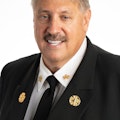All too often, I hear from people outside the fire service that, "the fire service is just doing EMS to justify their jobs." These people are implying that there are fewer fires and the fire service needs to justify budgets. They will argue that fire departments, such as the one recently in Yakima, WA, that wanted to get involved in first response on EMS calls are only interested in saving jobs, salaries and budgets.
Typically, I let these people know that staffing and fire resources have nothing to do with call volume and everything to do with potential risk. The fire service is in the business of mitigating risk and dealing with events when they occur. Fewer resources and staffing means less of an ability to deal with whatever consequence occurs — whether it is a fire or a heart attack. Any politician who wants to cut firefighter jobs and fire stations because there are fewer fires than 40 years ago should be mentally examined. It just takes one incident, regardless of how busy a fire station is, to change lives of a family or a community forever.
Of course, there are those then who argue that the "baby burning" scare tactic is not valid. They will argue that there is no real data to show how many firefighters are needed on EMS or fire calls. Maybe so — until now.
In April of this year, the National Institute of Standards and Technology (NIST), in collaboration with the International Association of Fire Chiefs (IAFC), the International Association of Fire Fighters (IAFF), the Commission on Fire Accreditation and Worcester Polytechnic Institute, began EMS field experiments associated with the Multiphase Study on Firefighter Safety and Deployment. The EMS field experiments are designed to measure firefighter and paramedic time-to-task functions for patient access and removal, advanced life support (ALS) medical calls and ALS-level trauma calls.
The EMS experiments are similar to NIST fire-suppression crew-deployment testing conducted earlier this year. In the EMS field trials, experiments were conducted to determine whether crew size and make-up can make a difference in a medical emergency. As with the prior testing, the EMS study involved firefighters from the Montgomery County, MD, Fire Rescue Service and the Fairfax County, VA, Fire & Rescue Department. The overall patient access and removal and the trauma portions of the experiments took place at the Montgomery County Fire Rescue Training Center and the medical response experiments took place in the Fairfax County EMS laboratory in Tysons Corner.
The NIST study is being funded by the Department of Homeland Security and the Assistance to Firefighters Grant (AFG) program. The grant calls for nearly $1 million in the first year and another $1 million for the second year of the study. Besides the field experiments, approximately 400 fire departments are also entering data online.
Preliminary data from the field experiments shows a vast need for additional paramedics and personnel on the scene of a medical or traumatic emergency. The amount of personnel on the scene does make a difference in the time-to-task chores. The days of sending only two personnel on an ambulance to a bona-fide emergency may very well be over after this data is released.
Using 15 different staffing and deployment patterns, firefighters from Montgomery County and Fairfax County responded to simulated events. One involved a trauma patient who fell from a ladder at a construction site. The second scenario involved a cardiac arrest patient who needed CPR and had to be transported down several flights of stairs. Each scenario was run with the 15 different staffing and deployment patterns. Additionally, each was run three times to obtain averages on each task. For example, one scenario called for only two paramedics on an ambulance to respond to the scene of the cardiac arrest.
Time measurements were conducted to determine how long it took to access the patient with all the necessary equipment, the time it took to get a history, the time it took to start an IV, the time it took to push drugs, the time to package the patient, the time it took to move the patient down several flights of stairs, etc. Some of the other 15 staffing and deployment patterns consisted of three paramedics on an ambulance and another scenario with two paramedics on an ambulance with four firefighters on a first-response vehicle. Other staffing patterns consisted of a basic life support (BLS) ambulance with one paramedic on the first-response engine.
Those I spoke with who were involved in the experiment said the trauma scenario showed a marked difference in the time-to-task functions as more paramedics and personnel were added to the scene. As an example, crews with one paramedic on the engine and one paramedic on the ambulance performed 1.8 minutes faster than crews with one paramedic on the engine and a BLS ambulance. The full amount of data and the results are expected to be released later this year.
GARY LUDWIG, MS, EMT-P, a Firehouse® contributing editor, is a deputy fire chief with the Memphis, TN, Fire Department. He has 32 years of fire-rescue service experience. Ludwig is chairman of the EMS Section for the International Association of Fire Chiefs (IAFC), has a master's degree in business and management, and is a licensed paramedic. He is a frequent speaker at EMS and fire conferences nationally and internationally, and can be reached through his website at www.garyludwig.com.
About the Author
Gary Ludwig
GARY LUDWIG has served in three fire departments over his career: St. Louis, Memphis, and Champaign, IL. His fire, EMS and rescue career spanned a total of 46 years, and he has been a paramedic for over 44 years. Ludwig served as president of the International Association of Fire Chiefs in 2019-20. He has a Master’s degree in Business and Management, has written over 500 articles for professional fire and EMS publications and is the author of seven books.
Connect with Gary
Email: [email protected]
Facebook: Gary Ludwig
Twitter: @ChiefGaryLudwig
Website: garyludwig.com
